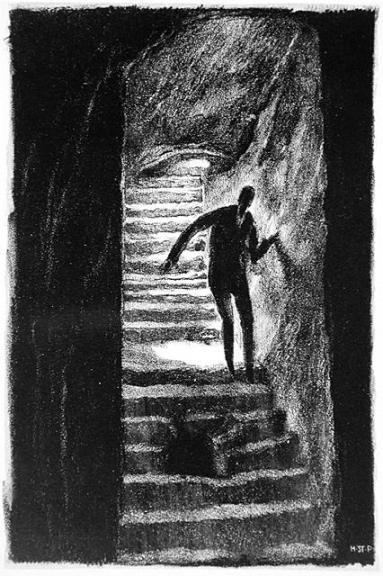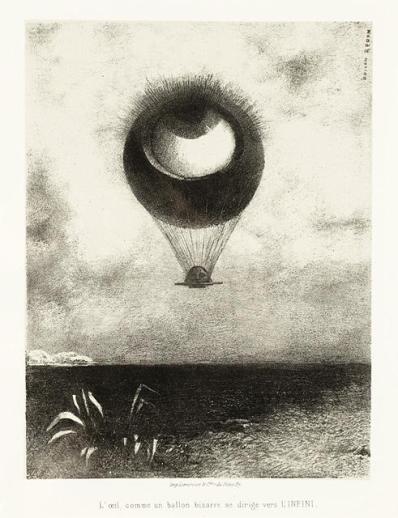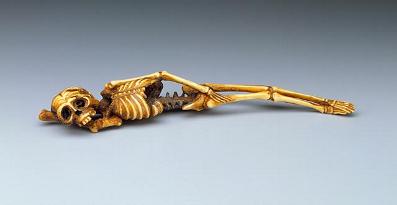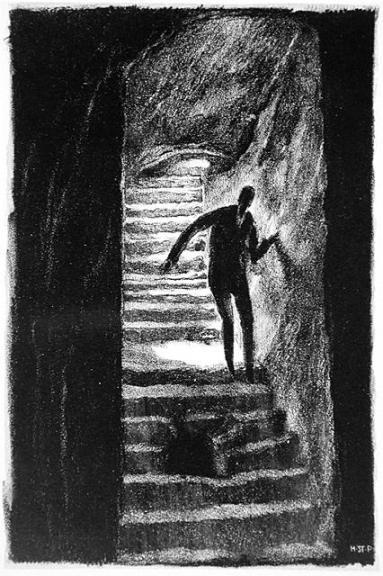During the past few years, we LACMA curators have been willingly outsourcing some parts of our jobs—to artists. When we invite artists to curate our collections, we don’t know exactly what to expect. Artists look at art differently than curators do, encouraging us take a new look at old favorites, pull things out of storage, and put apples together with oranges. Our latest guest curator is Tim Burton, who is also the subject of a major retrospective exhibition opening on May 29. In anticipation of that show, we’ve assembled Burton Selects: From LACMA’s Collection, on view now.
Next month’s Tim Burton, organized by the Museum of Modern Art, convincingly demonstrates that Burton’s creative process stems from his lifelong dedication to drawing; the vast majority of the 700-plus objects included in the show are drawings of one sort or another, from sketches and doodles to cartoons and character studies. Even in the earliest of these, Burton’s key themes and storylines are evident: creatures transforming from one thing into another, quirky children attempting to make sense of equally odd adults, skeletons mingling with humans.
As a curator of prints and drawings, I quickly realized that these same motifs have also been explored by many of the great printmakers in art history. Long before film emerged as the leading mass-culture medium, printmaking was a primary means of disseminating ideas widely and democratically. Thinking about these connections, I decided to invite Burton to curate an exhibition from LACMA’s collections.
Burton is based in London, and he already has a more-than-full-time job directing and producing movies. For practical reasons, therefore, we streamlined the curatorial process. I made a preliminary selection from our holdings of over 30,000 prints and drawings. Just for good measure, I included a few objects from the departments of photography, Latin American art, and Japanese art. Setting aside the usual curatorial concerns, such as chronology, I simply looked for things that might resonate with Burton’s vision. I knew from interviews that he appreciated German Expressionism, so I offered a lot of examples from LACMA’s renowned Robert Gore Rifkind Collection.

Hugo Steiner-Prag, The way to horror, 1915-1916 Print, Lithograph on handmade paper, Image: 7 1/8 x 4 13/16 in. The Robert Gore Rifkind Center for German Expressionist Studies (M.82.287.68L)
There are many other periods in art history when exaggeration, distortion, and fantasy tended to dominate over realistic description. The list eventually included European mannerism and symbolism, Japanese ghost images, and surrealist photographs. I couldn’t resist adding some three-dimensional objects: tiny Japanese netsuke, carved in the shapes of skeletons, ghosts, and demons. These were irresistibly similar to the puppets Burton used in his stop-motion animation films The Nightmare before Christmas and Corpse Bride.

Odilon Redon, À Edgar Poe (L'oeil, comme un ballon bizarre se dirige vers l'infini), 1882, lithograph, Wallis Foundation Fund in memory of Hal B. Wallis (AC1997.14.1.1)
From my long list of around 150 works of art, Burton selected 50, which was a comfortable number for the Rifkind Gallery (on the plaza level of the Ahmanson Building). As expected, he did select several German Expressionist prints, as well as an arresting four-foot-tall poster for the classic expressionist film M. He also responded to some of the Old Master prints, especially those featuring caricatured figures or chaotic compositions. Skeletons from the four centuries are included. And to my delight, so are the netsuke.

Hokkyo Sessai, Skeleton, mid- to late 19th century Netsuke, Stag antler with staining; sashi type, Raymond and Frances Bushell Collection (M.87.263.11)
I know visitors to LACMA will enjoy seeing the full scope of Tim Burton’s art in the retrospective exhibition in the Resnick Pavilion. Please also stop by the Rifkind Gallery to see some of LACMA’s art through his eyes.
Tickets for Tim Burton are on sale now. Join today for two free tickets to the exhibition and other benefits.
Britt Salvesen, Curator and Department Head, Wallis Annenberg Photography Department and Prints and Drawings Department



